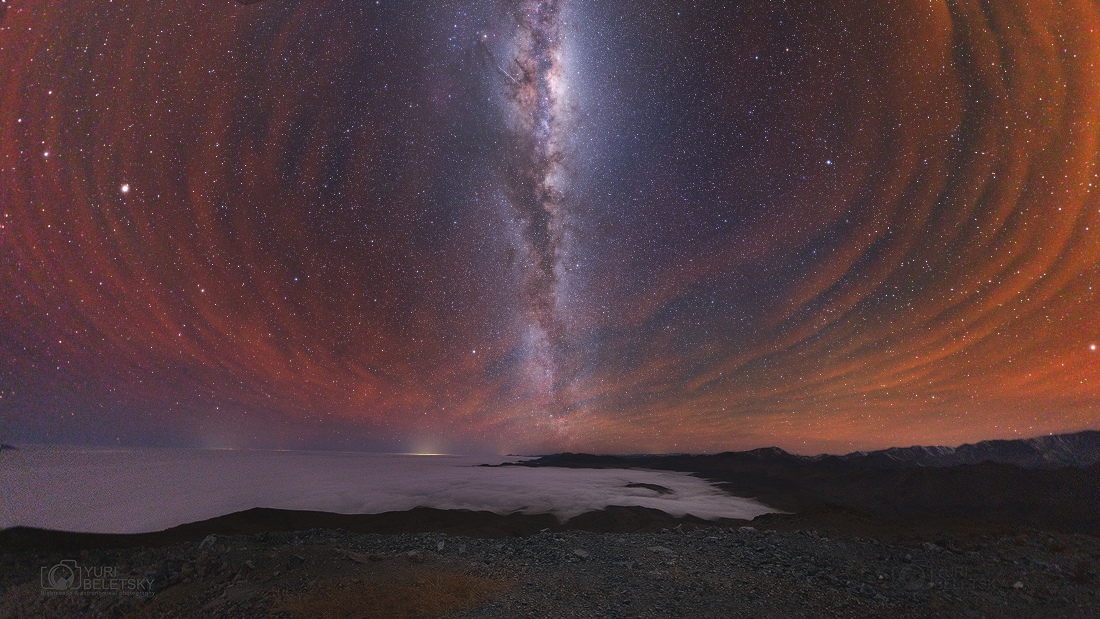
Copyright:Yuri Beletsky
原文:
After sunset on September 1, an exceptionally intense, reddish airglow flooded this Chilean winter night skyscape. Above a sea of clouds and flanking the celestial Milky Way, the airglow seems to ripple and flow across the northern horizon in atmospheric waves. Originating at an altitude similar to aurorae, the luminous airglow is instead due to chemiluminescence, the production of light through chemical excitation. Commonly captured with a greenish tinge by sensitive digital cameras, this reddish airglow emission is from OH molecules and oxygen atoms at extremely low densities and has often been present in southern hemisphere nights during the last few years. On this night it was visible to the eye, but seen without color. Antares and the central Milky Way lie near the top, with bright star Arcturus at left. Straddling the Milky Way close to the horizon are Vega, Deneb, and Altair, known in northern nights as the stars of the Summer Triangle.
中文翻譯:
在九月一日的日落後,智利的冬季夜空出現了異常強烈、泛紅的空氣輝光。這道空氣輝光像是波浪般在雲海之上和銀河系周圍涌現。這種輝光雖然與極光出現的高度相似,但其來源是化學亮度,即透過化學激發產生的光。常常在數位相機中捕捉到帶綠色調的輝光,但這晚的紅色發光是來自於OH分子和氧原子,在極低的密度下發生。近幾年來,這種空氣輝光在南半球的夜空中經常出現。當晚,肉眼可見,但不帶顏色。天蠍座的心臟星Antares和中央銀河位於畫面的上方,而明亮的星星Arcturus則位於左側。橫跨銀河、靠近地平線的還有Vega、Deneb和Altair,它們在北半球的星空中被稱為夏季三角形的星星。
#智利 #夜空 #空氣輝光 #銀河系 #Astrophotography #Antares #Vega #Deneb #Altair #夏季三角形 #自然之美 #靜謐之夜
來源:NASA每日圖片


